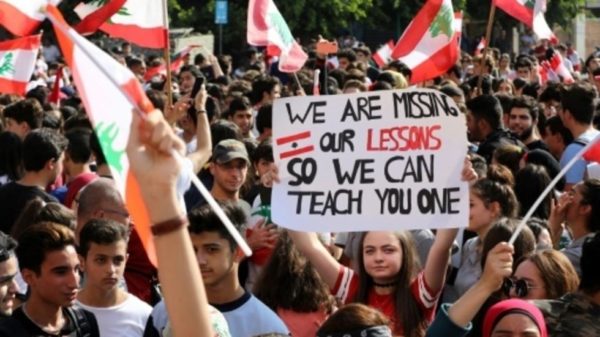
For weeks, Lebanon has been rocked by anti-government protests, the largest the country has seen in more than a decade.
The demonstrations have cut across sectarian lines – a rare phenomenon since the country’s devastating civil war ended – and involved people from all sectors of society.
They are united in their anger over their leaders’ failure to deal with an ailing economy, rising prices, high unemployment, poor public services and corruption.
Already the protesters have forced Prime Minister Saad Hariri to resign. But they want more, including the complete overhaul of the country’s political system and the formation of an independent, non-sectarian government.
The catalysts: Wildfires and a WhatsApp tax
October was a busy month for Lebanon, as the authorities grappled with one crisis after another.
It started with importers complaining about a shortage of US dollars in the country’s commercial banks, which led to the Lebanese pound losing value against the dollar for the first time in two decades on the newly emerged black market. When the importers of wheat and fuel demanded to be paid in dollars, bakeries and petrol station unions called strikes.
Then on 14 October unprecedented wildfires swept through the country’s western mountains, and Cyprus, Greece and Jordan were called upon for help after it was revealed Lebanon’s own fire-fighting aircraft was not in a fit state to deal with the blaze due to a lack of funds.
Residents were left unimpressed, with some noting how riot police vehicles equipped with water cannons had been fully maintained and were able to help battle the flames.
Three days later, the government proposed new taxes on tobacco, petrol and voice calls via messaging services such as WhatsApp to drum up more revenue.
The $6 (£4.50) monthly charge for using WhatsApp prompted widespread anger, and a few dozen people began protesting outside the government’s headquarters in central Beirut.
The backlash forced the government to cancel the proposed tax within hours, but it appeared to unleash a surge of discontent that had been simmering in Lebanon for years.
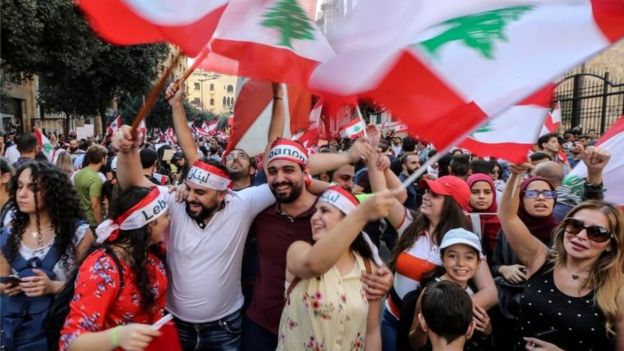
The following day, tens of thousands of Lebanese from all sects and walks of life took to the streets, demanding the resignation of Mr Hariri and his national unity government.
As many as a million people have since joined the demonstrations, bringing the country to a virtual standstill and shutting down schools, shops and banks.
What’s really behind the anger?
Lebanon is dealing with its worst economic crisis in decades.
It has the third-highest public debt-to-gross domestic product (GDP) ratio in the world at 150%. The youth unemployment rate has reached 37%, according to official figures, while the overall unemployment rate is 25%.
Almost a third of the population now lives under the poverty line, according to the World Bank.
The recent fall in value of the Lebanese pound on the black market has meanwhile raised fears of commodity shortages and price rises.
People have also long been angered by the government’s failure to provide even basic services. They have to deal with daily power cuts, a lack of safe drinking water, absent public healthcare and intermittent and weak internet connections.
The country’s public infrastructure, which was never fully rebuilt after the 1975-1989 civil war, has been stretched to breaking point in recent years by the arrival of more than one million refugees from neighbouring Syria.
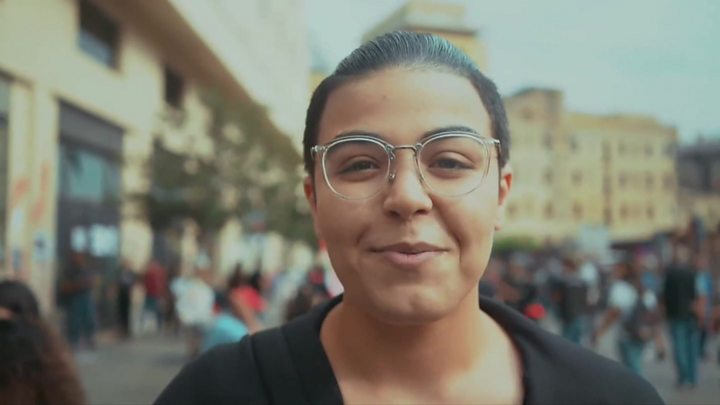

So what’s wrong with the system?
Most analysts point to one key factor: political sectarianism.
Lebanon officially recognises 18 religious communities – four Muslim, 12 Christian, the Druze sect and Judaism.
The three main political offices are divided among the three biggest communities under an agreement from 1943 known as the National Pact.
The president must always be a Maronite Christian, the speaker of parliament must be Shia Muslim and the prime minister must be Sunni Muslim.
Parliament’s 128 seats are also divided evenly between Christians and Muslims.
It is this religious diversity that makes the country an easy target for interference by external powers, as seen with Iran’s backing of Lebanon’s Shia militant Hezbollah movement, which is actively involved in Syria’s civil war.
Hezbollah is now a key power broker in Lebanon’s political system and dominated the outgoing government led by Mr Hariri, the Western-backed leader of the main Sunni bloc.
The National Pact was reinforced by the 1989 Taif Accords that ended the Lebanese civil war – a conflict marked by sectarian divisions and foreign interference.
Since then, political leaders from each sect have maintained their power and influence through a system of patronage networks – protecting the interests of the religious communities they represent, and offering – both legal and illegal – financial incentives.
Lebanon ranks 138th out of 180 countries on Transparency International’s global Corruption Perceptions Index. Corruption, it says, “permeates all levels of society” in Lebanon, with political parties, parliament and the police perceived as “the most corrupt institutions of the country”.
The watchdog says it is the very system of sectarian power-sharing which is fuelling these patronage networks and hindering Lebanon’s system of governance.
Observers say decades of corruption have sent the economy spiralling and pushed the general population into poverty.
What sets these protests apart?
Street protests are not a new phenomenon to Lebanon – neither are economic grievances.
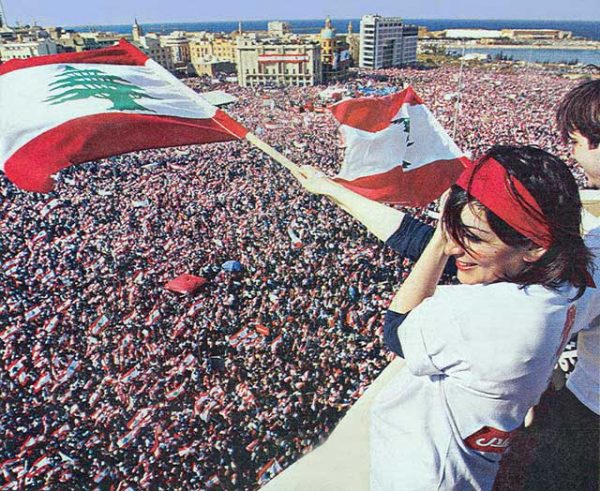
The last time the country saw mass demonstrations on the same scale was in 2005, after former Prime Minister Rafik Hariri (Saad’s father) was killed in a bomb attack in Beirut.
Many Lebanese blamed Syria for the attack and the protests eventually led to the withdrawal of Syrian troops that had been stationed in the country for 29 years.
A decade later, Beirut was hit again by widespread protests after the authorities closed the main landfill site near the city without arranging an alternative, and huge piles of rubbish filled the streets.
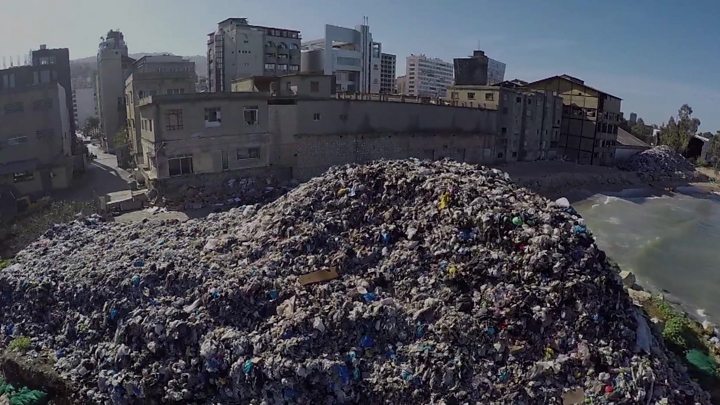
People blamed corruption and incompetence at the heart of the government for the waste crisis, and called for an overhaul of the political system.
Those demonstrations also cut across sectarian lines, but they were on a smaller scale and were limited to the capital. This year’s protests have been massive and have spread across the country, from Tripoli in the north to Tyre in the south.
And – unlike in 2005, when protests were led by groups opposed to the Syrian government and its Lebanese allies – the latest protests appear to stem from a grassroots, non-partisan protest movement, with no obvious leaders.
The people taking part are demanding accountability not just from the government as a whole, but the leaders of their own sects. “All of them means all of them,” is one of the main slogans adopted by protesters.
Sunni protesters in Tripoli were even reported to be chanting in support of Shia demonstrators in Tyre, who had faced threats and intimidation from Hezbollah and another Shia group, Amal.
In a rare moment for Lebanon, the protesters have been brought together by their shared grievances, rather than their sectarian identities.
Leave a Reply
You must be logged in to post a comment.